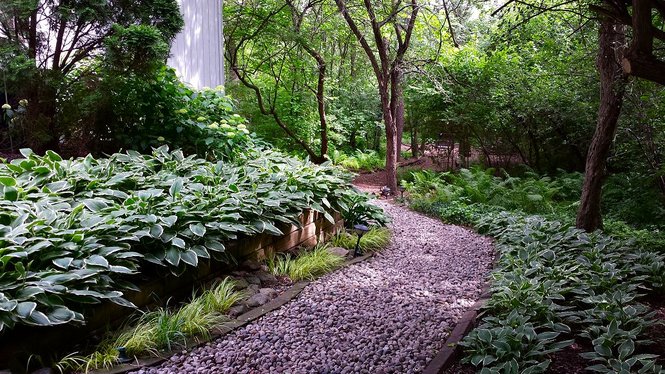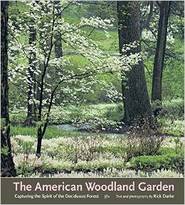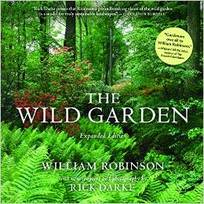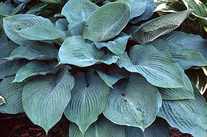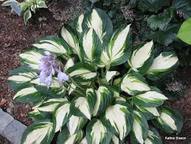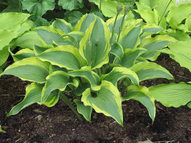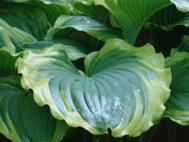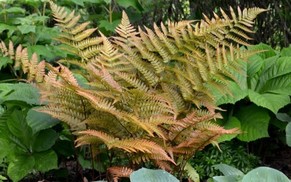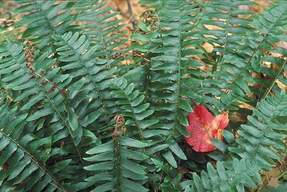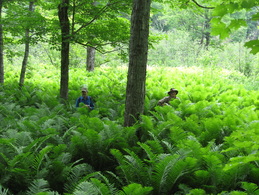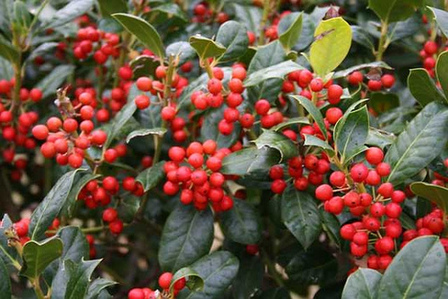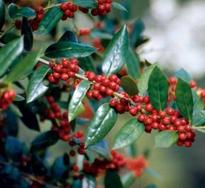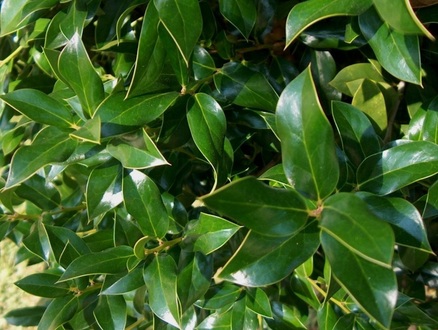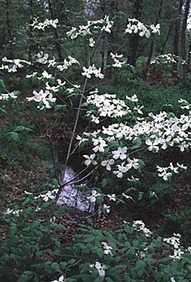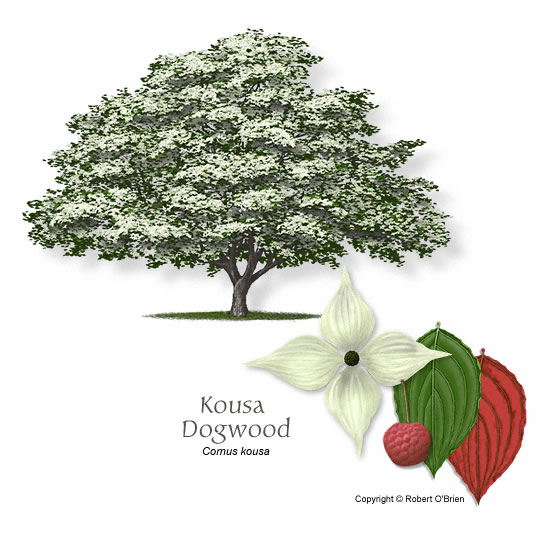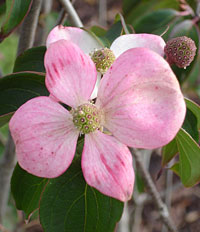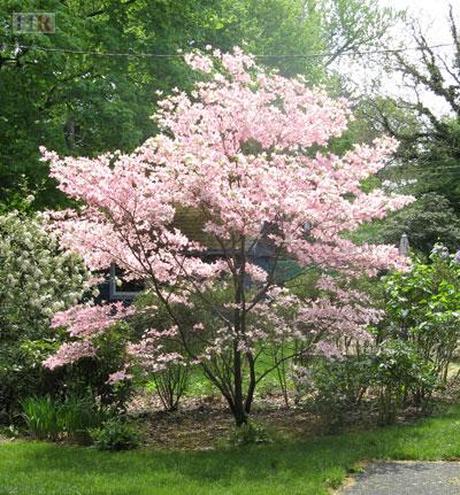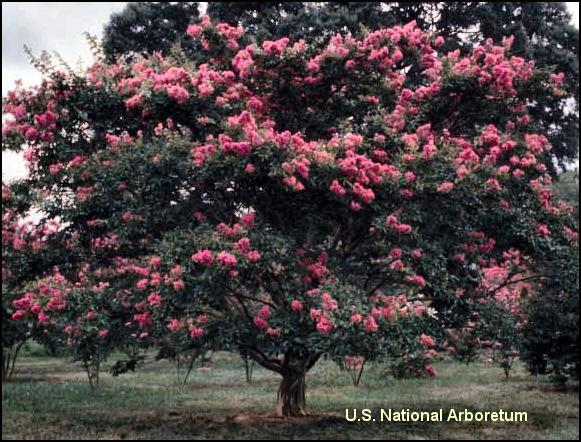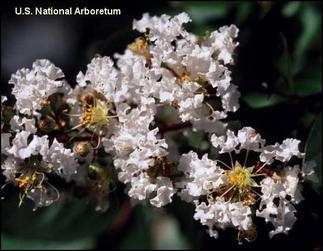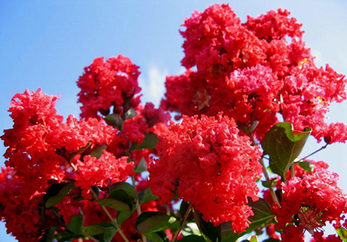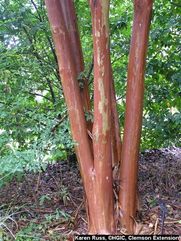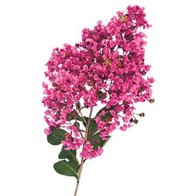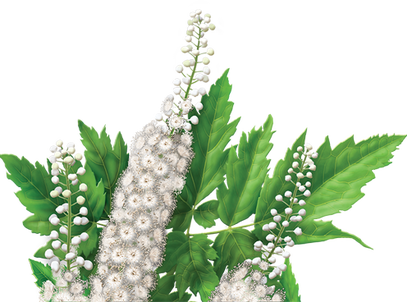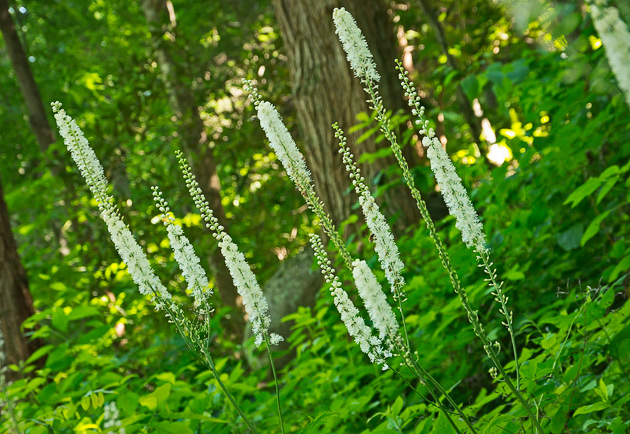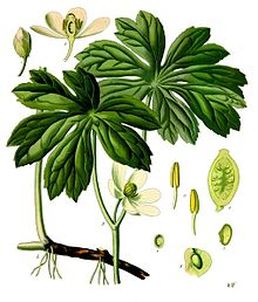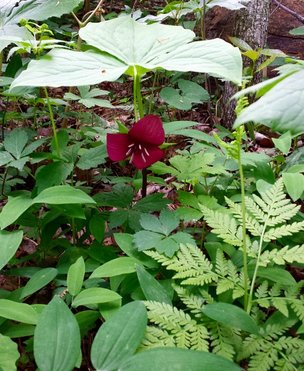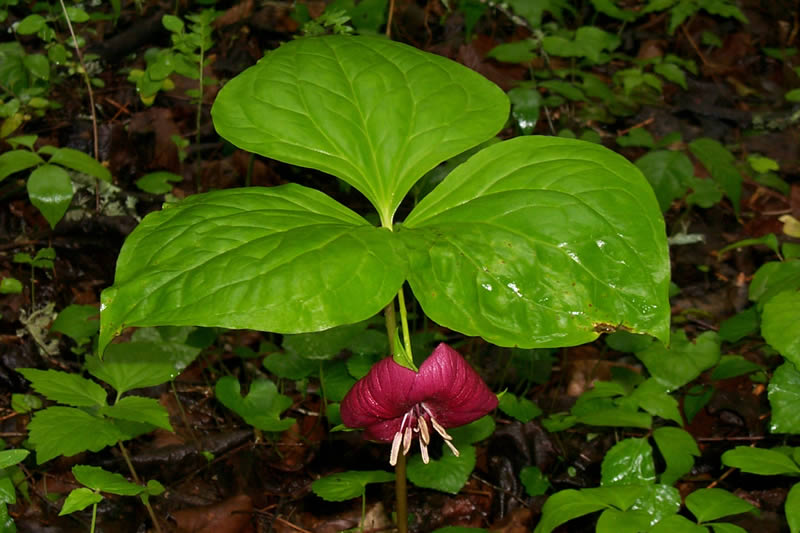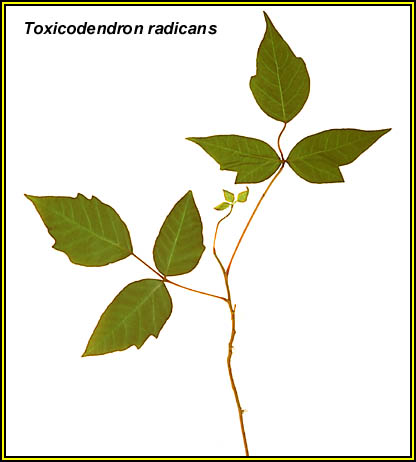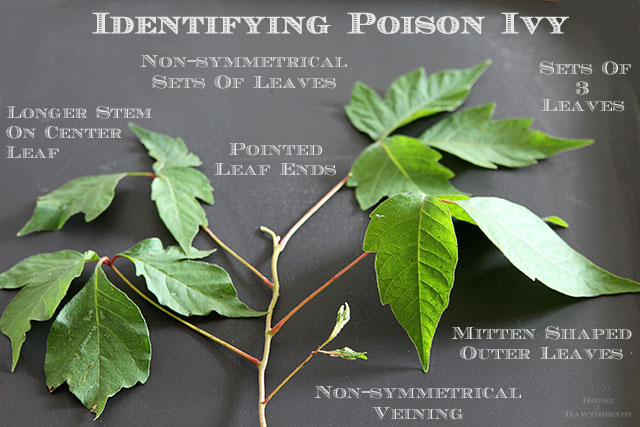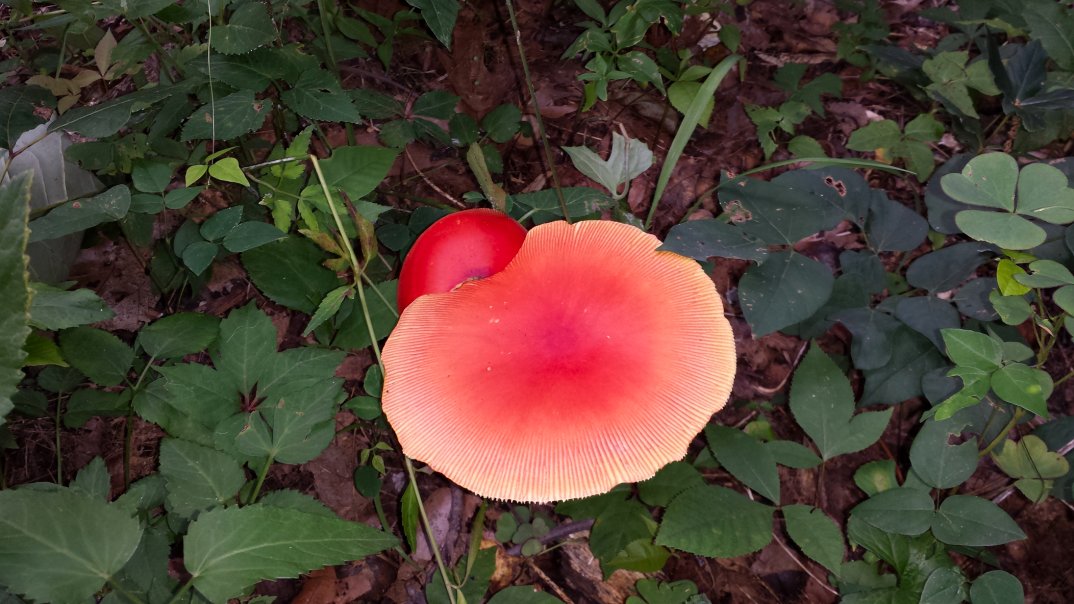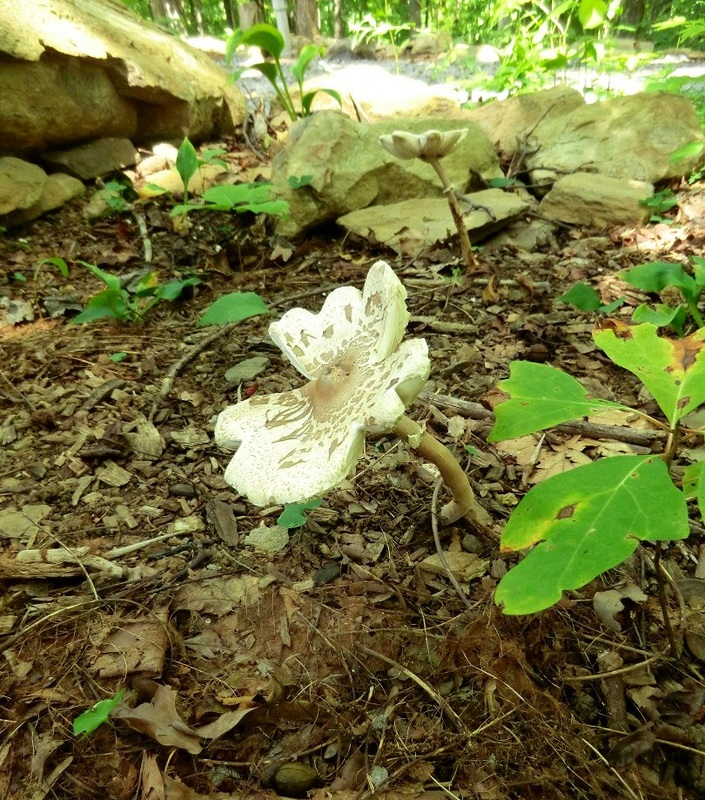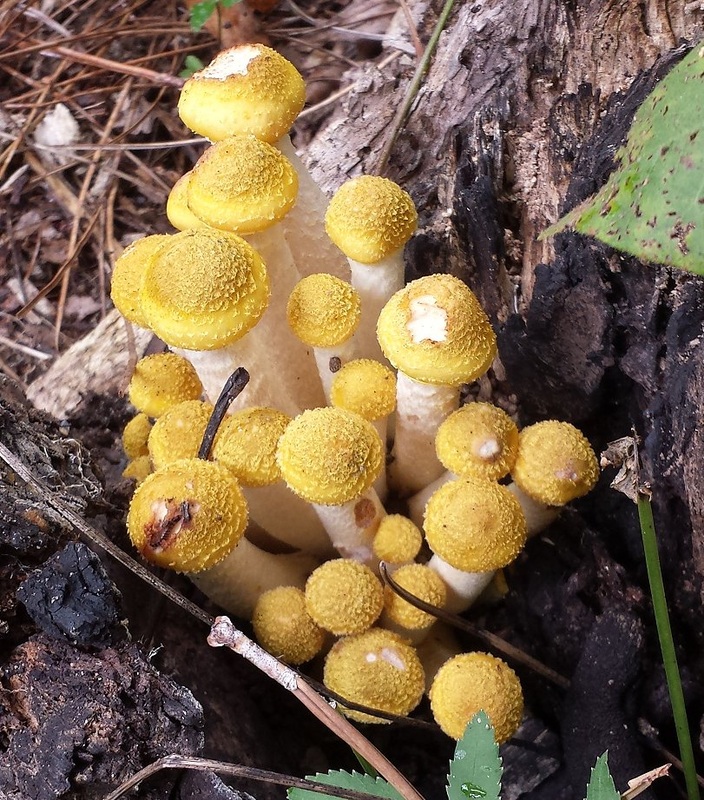Woodland Gardens
Intro
When we were looking at property for the project, one of our goals was to find a site that would have a sense of being in the wilderness while still being close (1.5-2 hours) to a major city. Our location in the southern edge of the Appalachians is about 1.5 hours from Atlanta and roughly 2 hours from Chattanooga. I know that many folks don't consider 1 1/2 hours "close", but that was my daily commute (each way) in Chicago, so it's close enough for me.
The surrounding area definitely has a wilderness feel. It is primarily a mixed hardwood forest with large hickories, oaks and poplars being dominant. We also have sassafras, locust and red maple (red maple has green leaves and should not be confused with the Crimson Maple).
Much of the Appalachians was clear cut for timber in the last century which caused devastating environmental damage. I don't know when our area was logged but many of the trees here are now 75-100 years old. The forest here is mature and there is a healthy mix of native species which we would like to preserve.
Construction does a lot of damage to the ground-cover and leaves a lot of scars behind. Now that construction is complete we will be working to establish woodland/shade gardens in the areas that were damaged by construction.
We have a partially wooded lot in Chicago and have been working on the shade garden there for many years. We hope to transform the damaged areas at neoTerra into a lush woodland retreat (without the hordes of mosquitoes that plague Chicago).
When we were looking at property for the project, one of our goals was to find a site that would have a sense of being in the wilderness while still being close (1.5-2 hours) to a major city. Our location in the southern edge of the Appalachians is about 1.5 hours from Atlanta and roughly 2 hours from Chattanooga. I know that many folks don't consider 1 1/2 hours "close", but that was my daily commute (each way) in Chicago, so it's close enough for me.
The surrounding area definitely has a wilderness feel. It is primarily a mixed hardwood forest with large hickories, oaks and poplars being dominant. We also have sassafras, locust and red maple (red maple has green leaves and should not be confused with the Crimson Maple).
Much of the Appalachians was clear cut for timber in the last century which caused devastating environmental damage. I don't know when our area was logged but many of the trees here are now 75-100 years old. The forest here is mature and there is a healthy mix of native species which we would like to preserve.
Construction does a lot of damage to the ground-cover and leaves a lot of scars behind. Now that construction is complete we will be working to establish woodland/shade gardens in the areas that were damaged by construction.
We have a partially wooded lot in Chicago and have been working on the shade garden there for many years. We hope to transform the damaged areas at neoTerra into a lush woodland retreat (without the hordes of mosquitoes that plague Chicago).
Plant Selection
We are not necessarily trying to re-establish local, native plants. We are creating woodland gardens that will have a wild or natural appearance but will use the best plants to provide screening, color and interest to the landscape. A couple of good reference books are linked below:
We are not necessarily trying to re-establish local, native plants. We are creating woodland gardens that will have a wild or natural appearance but will use the best plants to provide screening, color and interest to the landscape. A couple of good reference books are linked below:
|
Here are some of the main criteria for our plant selection:
- Low maintenance - Shade tolerant, suitable for understory planting - Hardy for the mountain climate - Informal, natural appearance - Deciduous plants to SW-South-SE - Evergreen screening to NW-North-NE - Plants with attractive foliage or flowers to add seasonal color - Plants that attract birds or other wildlife |
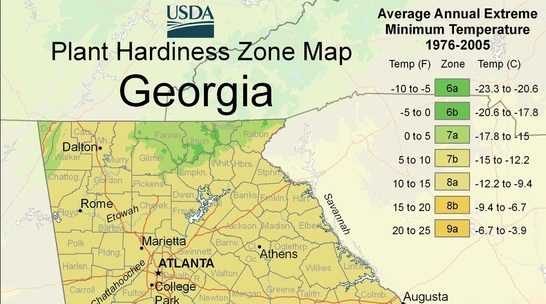
The Mountain Micro-climate
Hardiness Zones
The southern Applachian area is primarily zones 6b and 7a. We are located in Zone 7a. To be safe, we will mostly select plants that are hardy to zone 6
Rainfall
The average rainfall is approximately 60 inches per year, which places the climate on the mountain as borderline temperate rainforest. However, the rainfall here is not as consistent as the iconic rainforests of the Pacific Northwest. We experience periods of very high rainfall interspersed with 2-3 week periods of very little precipitation. We will water plants the first year or two but the plants selected must be able to tolerate dry periods with little or no watering once established.
Hardiness Zones
The southern Applachian area is primarily zones 6b and 7a. We are located in Zone 7a. To be safe, we will mostly select plants that are hardy to zone 6
Rainfall
The average rainfall is approximately 60 inches per year, which places the climate on the mountain as borderline temperate rainforest. However, the rainfall here is not as consistent as the iconic rainforests of the Pacific Northwest. We experience periods of very high rainfall interspersed with 2-3 week periods of very little precipitation. We will water plants the first year or two but the plants selected must be able to tolerate dry periods with little or no watering once established.
Hostas
I've had great success with hostas in our gardens in Chicago and they are my favorite shade plant. This year (2015) we are planting large-huge varieties that will eventually be used as border plants. Next year we will fill in with smaller varieties. The four we selected for this year are Blue Angel, Vulcan, Atlantis and Ocean Isle.
I've had great success with hostas in our gardens in Chicago and they are my favorite shade plant. This year (2015) we are planting large-huge varieties that will eventually be used as border plants. Next year we will fill in with smaller varieties. The four we selected for this year are Blue Angel, Vulcan, Atlantis and Ocean Isle.
Ferns
There are wild ferns growing on the property so we believe that ferns will do well. The native ferns are fairly short and often hidden under the larger 'weeds" (aka, undefined native plants). We have selected Autumn ferns for their fall color, Christmas Ferns that retain their fronds through the winter and Ostrich ferns for their dramatic size. These all do well in Chicago so we expect them to do even better on the mountain.
There are wild ferns growing on the property so we believe that ferns will do well. The native ferns are fairly short and often hidden under the larger 'weeds" (aka, undefined native plants). We have selected Autumn ferns for their fall color, Christmas Ferns that retain their fronds through the winter and Ostrich ferns for their dramatic size. These all do well in Chicago so we expect them to do even better on the mountain.
Holly
We are using hollies to provide screening and winter color. Generally, Hollies prefer sunny locations. We will use shade-tolerant varieties or plant them at the margins where they receive sun.
Dogwood (Cornaceae)
Anthracnose Fungus
Unfortunately, Dogwoods are susceptible to two forms of anthracnose, a disease caused by fungus infection. The fungus thrives in cool, damp or humid conditions and is a significant problem at elevations above 2000 feet where these conditions exist.
Spot Anthracnose is a leaf disease caused by the fungus Elsinoe corni.
Dogwood Anthracnose is caused by the fungus Discula Destructiva. This is a serious disease that's killed thousands of dogwoods in recent years and is particularly devastating in the mountain climate here. Cornus florida is particularly susceptible so we will avoid the native species and focus on disease resistant varieties.
Fungicides can be used to treat/protect against both forms of anthracnose. These include: chlorothalonil, mancozeb, propiconazole, thiophanate-methyl or copper fungicides.
Spot Anthracnose is a leaf disease caused by the fungus Elsinoe corni.
Dogwood Anthracnose is caused by the fungus Discula Destructiva. This is a serious disease that's killed thousands of dogwoods in recent years and is particularly devastating in the mountain climate here. Cornus florida is particularly susceptible so we will avoid the native species and focus on disease resistant varieties.
Fungicides can be used to treat/protect against both forms of anthracnose. These include: chlorothalonil, mancozeb, propiconazole, thiophanate-methyl or copper fungicides.
|
Kousa Dogwood (Cornus kousa)
This variety is native to Japan, Korea and China. It has much better disease resistance than flowering dogwood (C. florida). 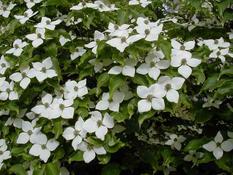
Hardiness: Zones 5 - 8
Exposure: Sun - partial sun Height: 15 - 20 feet Spread: 15 - 20 feet Flowers: Typically while Growth: Slow Blooms: Spring Notes: Large red fruits 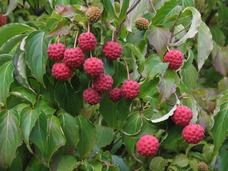
The fruit is edible and can be used to make preserves or wine.
Click HERE for a recipe for Dogwood preserves. |
Crape Myrtle (Lagerstroemia indicia)
Crape Myrtle (L. Indicia) is native to India but has become a mainstay of the South. They flower throughout the summer (as long as 12 weeks under the right conditions) bringing color to the landscape. Many varieties have exfoliating bark that adds visual interest all year.
L. Indicia is hardy to zone 7. Hybrids crossed with L. fauriei (native to Japan) have been introduced by the U.S. National Arboretum and are hardy to Zone 6. Some of these include: 'Pocomoke', 'Acoma', 'Caddo', 'Hopi', 'Tonto', 'Cherokee', 'Osage', 'Sioux', 'Tuskegee', 'Tuscarora', 'Biloxi', 'Kiowa', 'Miami', and 'Natchez'.
Crape Myrtles require full sun to produce good blooms. Click on images below to learn more about these beautiful plants.
L. Indicia is hardy to zone 7. Hybrids crossed with L. fauriei (native to Japan) have been introduced by the U.S. National Arboretum and are hardy to Zone 6. Some of these include: 'Pocomoke', 'Acoma', 'Caddo', 'Hopi', 'Tonto', 'Cherokee', 'Osage', 'Sioux', 'Tuskegee', 'Tuscarora', 'Biloxi', 'Kiowa', 'Miami', and 'Natchez'.
Crape Myrtles require full sun to produce good blooms. Click on images below to learn more about these beautiful plants.
I am slowly learning to identify some of the native plants found on the site.
Black Cohosh (Actaea racemosa)
Black Cohosh is native to eastern North America and grows prolifically on our site in any open, shade areas. It has tall stems (4-5 feet) and develops tall white flower spikes in the summer that attract bees and butterflies.
The roots have been used as an analgesic and a treatment for menopause symptoms.
The roots have been used as an analgesic and a treatment for menopause symptoms.
Mayapple (Podophyllum)
Mayapples is also native to eastern North America and appears in large colonies in the early spring. The stems develop a single flower in the spring and small hard fruit resembling an apple in the summer as the plants go dormant. The plants are poisonous although the fruits can be eaten in small quantities.
Trillium
There are 39 species of Trillium that grow in North America. All varieties are characterized by plants with three large leaves and flowers with three petals. Our site has small numbers of Trillium in heavily shaded areas. The primary variety we see is Vasey's Trillium which is native to the southeast and Appalachians. The plants emerge in early April before the trees fill out and block the sun.
Unfortunately, many of the best groups were damaged or destroyed installing the septic system. We are hoping that we can restore them over time.
Poison Ivy (Toxicodendron radicans)
It would be an exaggeration to say that poison ivy is the most prolific native plant here... but it sure feels that way! It seems that one or both of us come in contact with it every week.
The effects of poison ivy are caused by contact with plant oil which is only spread by contact with the oil. Contrary to popular belief, the oil/rash is not spread by scratching. However, the oil is very persistent and can remain on gloves, clothing or even garden tools for long periods of time so you can spread the rash by contact with these items if they haven't been cleaned. The big culprit for me has been gloves. I think they are protecting me and get complacent but if I I wipe my arms or swat a bug I'm spreading the oil from the gloves to my skin. Not fun!
The effects of poison ivy are caused by contact with plant oil which is only spread by contact with the oil. Contrary to popular belief, the oil/rash is not spread by scratching. However, the oil is very persistent and can remain on gloves, clothing or even garden tools for long periods of time so you can spread the rash by contact with these items if they haven't been cleaned. The big culprit for me has been gloves. I think they are protecting me and get complacent but if I I wipe my arms or swat a bug I'm spreading the oil from the gloves to my skin. Not fun!
We have accumulated an impressive array of poison ivy soaps, salves, sprays and other remedies. The Tecnu products seem to be fairly effective at reducing the intensity of the rash after exposure and hydro-cortisone creme or spray helps reduce the maddening itch.
The battle continues.
The battle continues.
Mushrooms
I haven't learned to identify any types of mushrooms yet. In July we now see a few varieties growing among the dead leaves and branches. The bright red ones really stand out while the white ones look almost like a rock from a distance.
It is September now and we have new varieties of mushrooms sprouting up. I have no idea what they are, but the phallic looking ones are pretty cool.

